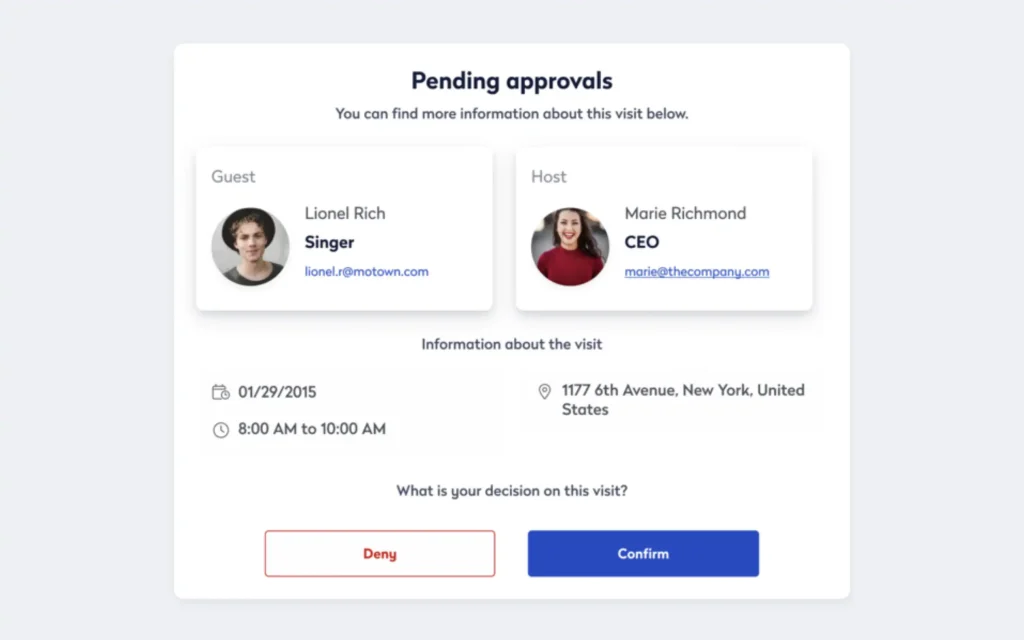
When saddled with traditional manual methods, facility and maintenance professionals struggle under time- and effort-intensive workflows trying to capture and leverage reliable data. What they can grab often ends up being inaccurate, and there’s a lot they miss. Implementing modern facility management and intelligent worktech strengthens and streamlines workflows, helping teams meet overall organizational goals.
And for enterprise-level organizations, implementing a single solution across multiple locations delivers extra benefits. By centralizing more data and standardizing more processes, large organizations can find additional efficiencies and apply them in more places.
Maintenance and operations: Standardization of parts and practices
Traditionally, it’s been hard for facility and maintenance teams to step back from the demands of the day-to-day for a holistic understanding of their situation. In modern facility management, the more data you have, the bigger and brighter the “big picture” you can paint.
By implementing a single solution across multiple locations, an organization gets all its data in one central spot, helping them better leverage it for stronger and more actionable insights. Inventory is a perfect example. The more an organization knows about what it has on hand, the more effectively it can use it.
Connecting all the parts for inventory management
Accurately tracking inventory helps facility professionals cut costs by ensuring they always have the necessary supplies and equipment on hand, reducing downtime and emergency purchases. It also prevents overstocking, which can lead to wasted resources and storage space.
By keeping accurate, up-to-date inventory levels, managers can better plan maintenance schedules and budgeting, leading to more efficient operations. And accurate tracking improves accountability and reduces the risk of shrinkage.
Tracking across multiple facilities helps professionals deliver all these benefits plus many more.
Cost savings with bulk orders: A single software platform empowers teams to aggregate demand from multiple locations, enabling you to place bulk orders, which usually come with volume discounts, reducing the cost per unit and saving money overall.
Better supplier relationships: Consistent and accurate data from a single platform can help departments build stronger relationships with suppliers, helping them to negotiate better terms and conditions based on consolidated purchasing power.
Easier supplier comparison: With a centralized system, a facility or maintenance manager can easily compare prices, quality, and delivery times from different suppliers. Transparency helps identify the best suppliers, ensuring the organization gets the best possible value for money.
Prevention of stock outs: When locations are close enough together, a single software platform can help prevent stock outs by allowing teams to transfer inventory between locations. Real-time inventory tracking enables them to see which locations have excess stock and which are running low, allowing for timely redistribution.
![]()
Enhanced reporting and analytics: Centralized data provides comprehensive insights into inventory usage, trends, and performance across all locations, helping with data-driven decisions to optimize inventory management and reduce costs.
Smoother scalability: As the organization grows, a single software platform can easily scale to accommodate additional locations, ensuring consistent and efficient inventory management.
Creating flexibility and efficiency with standardized practices
Sharing data also supports standardization. Instead of every location having an idiosyncratic set of standard operating procedures (SOPs), by sharing the same data sets across many different locations, companies can ensure teams are training up to and then working at the same high standards.
So much of the value of a software solution comes from what an organization puts into it, including data about assets and equipment, schedules for maintenance, and associated parts and materials. There’s also all the SOPs, including customized inspections checklists and step-by-step instructions for repairs.
Once an organization has a shared set of practices, it’s easier to set and enforce standards because everyone is working from the same sets of rules. And when those rules change, it’s also easier to communicate any updates because everyone — regardless of physical location — is in the same spot, on the same platform.
When processes are standardized, labor also becomes more flexible. Managers can deploy teams more effectively across facilities to tackle special projects or urgent repairs as needed, trusting that every employee knows and follows the same SOPs.
And all lessons learned are seamlessly shared because everyone can see the same data, fostering a culture of continuous improvement. When all locations are using the same platform, the insights and experiences gained from one site are easily shared.
For example, if a particular maintenance technique proves effective at one location, it becomes common knowledge across locations. So, if a tech discovers the reason the automatic doors in the front lobby stopped working was because of dirt on the sensor, every tech at all the other facilities now knows to check the sensor first if they see the same issue.
Visitor management: Smoother, more secure employee and visitor experience
Implementing a single visitor management system across multiple locations offers a range of benefits that enhance security, streamline operations, and improve overall efficiency.
Stronger security
Centralized visitor management strengthens security by providing real-time tracking and access control. With a single system, security personnel can see visitor activity across all locations from a centralized dashboard, allowing for immediate action in case of any suspicious or unauthorized activity.
For example, if a visitor is flagged as a security risk at one location, their access can be immediately restricted at all other locations. Additionally, the system can generate alerts for scheduled and unscheduled visits, ensuring the company can control who is in its facilities. A comprehensive approach to security not only protects the physical assets of the company but also safeguards sensitive information and personnel.

Customizable workflows
Tailoring the check-in process to meet the specific needs of each location while maintaining a consistent user experience is a key advantage of a single visitor management system. Different locations may have unique requirements, such as specific check-in procedures, additional documentation requirements, or varying levels of access control.
A customizable workflow allows each site to set up its own rules and processes without compromising the overall consistency of the system. For instance, a manufacturing plant might require visitors to sign a safety waiver, while a corporate office might focus on background checks.
Despite these differences, the user interface remains intuitive and familiar, ensuring that visitors and staff can navigate the system easily. Flexibility ensures that each location can operate efficiently while still benefiting from the standardized processes and best practices shared across the company.
Data capture and integration
Companies can share visitor data from across multiple locations with facility and space planning teams to ensure the best possible overall real estate footprint. For example, they can look at visitor types and frequencies at each location.
If multiple locations have a lot of client visits for meetings, it might make more sense to have a centralized meeting space. Locations with low occupancy numbers and poor utilization performance might be ready for rightsizing. Two close-by locations can become one spot with better metrics and lower costs.
Customer success story: Major auto parts retailer improves operations across multiple locations
A leading auto parts retailer with an extensive network of stores faced significant challenges maintaining the reliability and performance of its assets and equipment. With so many locations, the company needed a solution to streamline its maintenance operations and ensure consistent service across all sites.
One of the primary issues was that the data was decentralized. Every location operated independently, disrupting connectivity and removing visibility into the overall performance of their assets. Fragmentation made it difficult to track maintenance activities, identify recurring issues, and allocate resources efficiently. And the lack of a centralized reporting system meant that technicians often had to rely on manual, error-prone methods to document and report maintenance tasks, which further exacerbated the problem.
To address these challenges, the company implemented Eptura’s centralized reporting platform. The goal was to create a unified system that could integrate data from all locations, providing real-time insights and improving the overall efficiency of maintenance operations.
Eptura’s solution includes:
Centralized reporting: Empowering the retailer to aggregate data from all locations into a single, accessible platform. A centralized view enabled management to monitor the status of assets and maintenance activities in real-time, facilitating better decision-making.
Downtime tracking: Helping identify and address the root causes of equipment failures more effectively. By tracking downtime, the company could prioritize maintenance tasks and reduce the frequency and duration of equipment outages.
One of the many improvements has been the reduction in downtime. The retailer reports a decrease in equipment downtime, which has had a direct positive impact on operational efficiency and customer satisfaction. And the platform has helped maintenance technicians become more efficient. In fact, they now spend less time on administrative tasks and more time on actual maintenance activities, leading to an increase in technician productivity.
Centralized reporting has also helped the company discover valuable insights into asset performance and maintenance costs. By tracking key metrics, the company has been able to optimize its maintenance schedules and reduce unnecessary maintenance tasks, resulting in a reduction in maintenance costs. Improved data visibility has also enabled them to identify and address recurring issues more effectively, leading to a more reliable and efficient operation.








